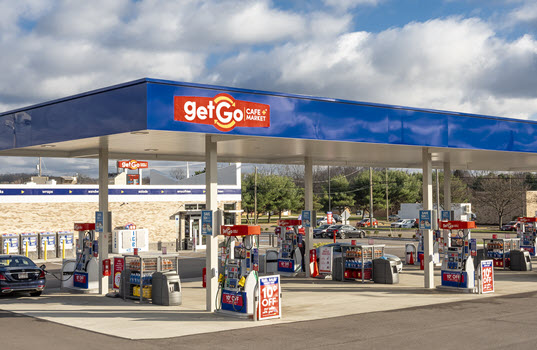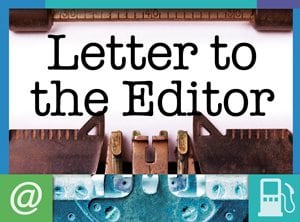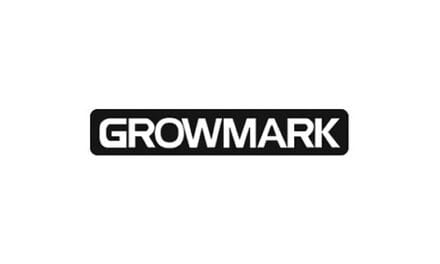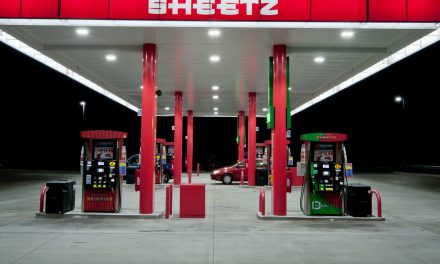By Keith Reid
There was an old rule of thumb in the industry. If a company entered retail from a traditional marketing operation it was assumed that it would do fuel logistics better than retail. Conversely, retailers entering the fuel logistics process would be better at retail than the fuels component. That might have been true decades ago, but not so much today with the mergers, acquisitions and the cross pollination of talent.
Joel Hirschboeck, vice president of fuel, Giant Eagle Inc., exemplifies today’s reality. He joined Pittsburgh-based Giant Eagle/GetGo in September of 2018 and is responsible for the management of GetGo’s fuel category, including retail pricing, supply and logistics, wholesale branded sales and commercial fleet sales. During the past two years, Hirschboeck has helped enable GetGo to insource fuel procurement, launch a new loyalty program (AdvantagePay) and transition and certify GetGo as a TOPTIER fuel retailer.
Prior to joining Giant Eagle, Hirschboeck served as general manager of fuel marketing and procurement at Kwik Trip Inc. During his nine years at the La Crosse, Wisconsin-based convenience retailer, he led initiatives in fleet optimization, CNG, renewables like Unleaded88 and biodiesel blending, as well as diversifying the supply portfolio to include bulk trading and hedging capabilities.
Hirschboeck’s operations have not only been progressive by retail fueling standards but also are noteworthy even by marketer/distributor standards. Here are his thoughts on running a top-level fuels program.
FMN: What’s the most interesting non-traditional fuel in the industry today?
Hirschboeck: Something that I think everybody is paying attention to—or at least it’s gotten the most hype—are electric vehicles. It cannot be ignored anymore. It is everywhere, from auto manufacturers and tech companies to fuel providers, retailers and utility companies. So, everybody’s kind of looking at how will EV work and how will it evolve. It is reminiscent to me of the natural gas buzz, but there is a lot more government support behind electrification. The industry is investing in it, and the big auto companies are behind it now in a big, public way. I think you must be aware and be involved in that market space and start to understand what is happening.
FMN: How are you approaching EV charging?
Hirschboeck: We’ve recently partnered with Tesla. We will be launching our own proprietary EV network at our stores. It’s time to get into the game and really understand what the market looks like. But more importantly, how are we going to operate in that market space and the convenience store and what does that look like and what opportunities exist?”
FMN: Is there a model for metering and selling electricity at the charger?
Hirschboeck: I think the challenge is in how the value chain works. In a liquid fuels’ environment, I buy a gallon of gasoline for “X” price and I sell it for “X” plus to cover cost and margin. Utility rates don’t necessarily align with a onetime quick-use environment. It is hooked up to a meter and it tracks over time, and there is a demand charge based on your peaks. That helps them protect themselves and cover the ratability of the use on a day-to-day basis. But then it is per-kilowatt hours, so it is not on a per-unit monetization basis. So, there is not a smooth, simple one-to-one transfer from the energy origin supplier to the end consumer. That is something that needs to be dissected quite a bit. And I’m sure that’s being worked on. You cannot come back and bill your EV customer a month and a half later if you have a demand charge.
I think that is why today you see a lot of subscription models, or the rates are variable. It’s not as commoditized as consumer gas prices. There is not a street sign that says, “this is what you’re going to pay.” And everybody is competing from the same supply points, so there will be opportunity there and then comparing it to charging up at home or an at-work solution or the like.
FMN: What does a retailer need to be aware of if they want to more fully manage their own fuel logistics?
Hirschboeck: We just went through a big transformation process last July. We were very reliant on a third party for our fuel supply and distribution in a delivered gallon model. We worked toward bringing a lot of that capability in-house, which is part of my reason for joining the GetGo team. There is obviously a lot that goes into it from a systems perspective, a talent perspective and relationships. Establishing those relationships with your refinery and supply partners and building on them.
There are a lot of different ways you can approach the logistics side of the business. We utilize a single-point, third-party dedicated fleet for delivery that functions and operates a lot like an in-house fleet. That is what I was familiar with from Kwik Trip—having your own fleet at your disposal to optimize and to support the stores. And so, we have come up with a model that very closely mimics that and gives us dedicated service and really brings top-notch support to our stores, because for us supply is priority No. 1.
FMN: What about the commercial side for a retail consumer-focused operation?
Hirschboeck: That is something that we are growing actively. Historically, GetGo focused on gasoline, and it is still, by far, the top product. But we see the opportunity there. Fleets continue to regionalize their operations. There is less coast-to-coast, over-the-road driving, a lot more relay and hub-and-spoke activity. I think the pandemic is going to push that even further, as we see a lot more online retail activity take place and needing to support local and regional delivery capabilities. So, it is a good time right now to really be considering commercial fleet fueling.
FMN: What are the differences inside the store, if any, between the retail customer and the commercial customer?
Hirschboeck: Your traditional commuter rush is in the morning and the afternoon. Obviously, that has changed since the pandemic. We have seen a shift to more late morning or midday. From the truck driver’s perspective it is similar, but they are usually early morning or at the end of their day. They typically buy more inside, especially if it is their stock up for the day—and away they go. They are good inside customers and, depending on the type of operation the driver works for, can be very ritualistic and routine. So, capturing those customers and leaving a good impression is important.
FMN: Hydrogen is getting a buzz now, specifically for commercial fueling. Do you have any thoughts on that?
Hirschboeck: It is challenging because the core commodity infrastructure is complex. You cannot just go into your street front and tap into your utility like you can with natural gas or electricity. It is also cryogenic, so you are more on par with an LNG type solution. So, the infrastructure side is very expensive. Some are starting to develop ideas and solutions for the heavy-duty market. So, I think their success will be like how the CNG market developed, leveraging some significant anchor tenants to be able to build out the core infrastructure.
FMN: Does CNG still make sense?
Hirschboeck: There are still opportunities, but you really need to understand the economics. If you are in the Midwest or East Coast with access to Low Carbon Fuel Standard credits and RNG, you can work the cost of goods pretty low. And if you understand the business and how to manage it, it is still a very successful way to run a fleet. You just have to do the analysis and work through the cost of ownership.
FMN: How important is technology in managing your fuel program?
Hirschboeck: You can have success in all ranges of technology adoption. If you are a small operator you don’t need a whole lot of technology. You can do just fine and make margin and have a successful business. When folks get their site counts and their volumes up, the fractions of cents that can be saved through the speed of information starts to add up to a real, material number. And before you know it, you have got constant data and information flowing. You know your competitors’ prices, and you can react as quickly as you need to and capitalize on every gallon.
You are tracking the market and know exactly when to pull the trigger and buy more product—or not. And you utilize technology so you are buying the lowest price product that day, that minute, that hour, that terminal.
FMN: Is there a role for fuel to be more than just the commodity that people stop for then go into the store?
Hirschboeck: We have been evaluating our fuel platform and the products we offer and recognized that there was an opportunity to improve the fuel that we were offering, so we joined and just rolled out Top Tier. We have also branded our premium fuel G-Force, and we are seeing good results with that.
You can then marry that with our loyalty programs, like Fuel Perks Plus, where you can earn or redeem at the c-store or the pump or in the grocery store. So, it’s very flexible. We also have a program called AdvantagePay that gives you instant discounts on top of your Fuel Perks loyalty points that you earn. It is through a program that links your checking account to our AdvantagePay loyalty card and that gives you, depending on the station, day and conditions from five to 30 cents off additionally on your purchase per gallon. It is a robust program and probably one of the more lucrative within our market.
FMN: If you had to name one key to success with retail fueling, what would that be?
Hirschboeck: I think you could probably place these two in the same bucket—flexibility and adaptability. The fuel space has been putting gasoline in cars for the past 100 years. But, within that it is so dynamic between the infrastructure, how you market fuel, the types of fuels, what alternatives should you be investigating, how you buy fuel—is it bulk, at the refinery gate, contracts with supply partners? There is always something changing. So, if you own your own destiny and you can be adaptable, that is probably the biggest key from a success standpoint.










